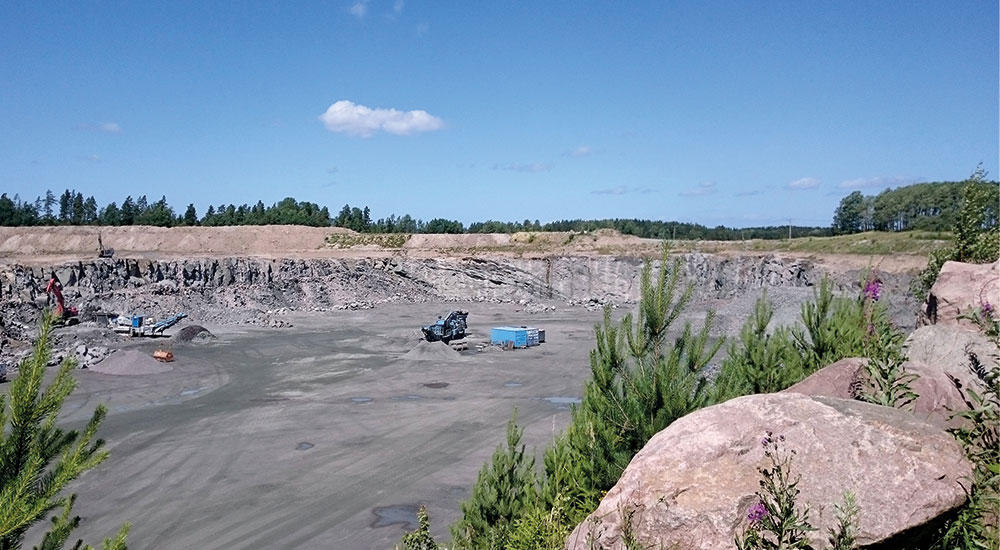
The fact is that Götene quarry reveals what the ancient rock looks like underneath the covering of soil – the bedrock that was eroded down to a flat surface and is known as the sub-Cambrian peneplain. This happened around 600 million years ago and laid the foundation for the plains landscape of Västgötaslätten. The quarry shows that the rock surface beneath the soil cover is not entirely flat. The rock surface we see today beneath the soil cover is slightly undulating. In contrast to the peneplain near Slättbergen in Trollhättan and near Nordkroken, which consist of granite, the rock in this quarry is gneiss. Gneiss consists of layers with different compositions, which results in a rock that is anything but homogeneous. The structure of the gneiss affects the rate of erosion and weathering, so the gneiss has weathered at different rates due to variations in its mineral content, and this is why it is not flat.
This is still a quarry in use, so you need a permit to get access and examine it closer!


